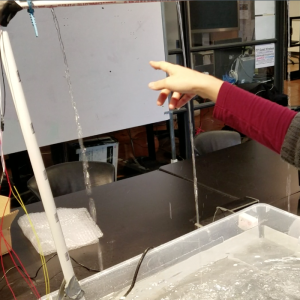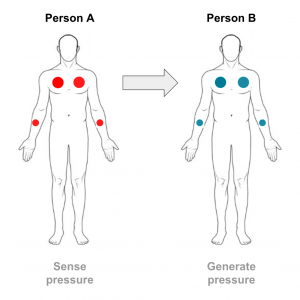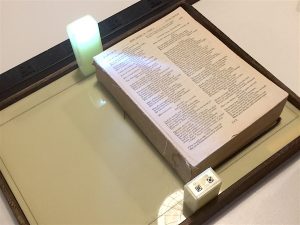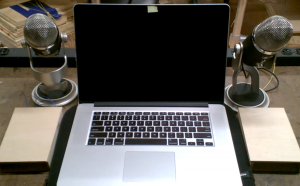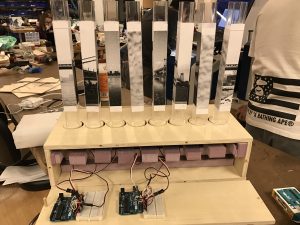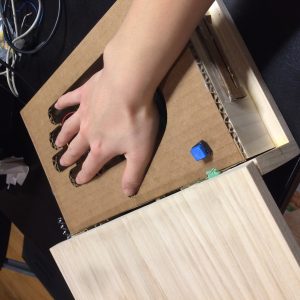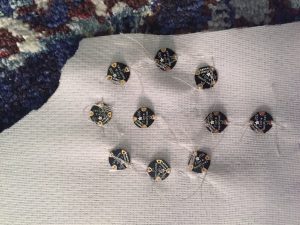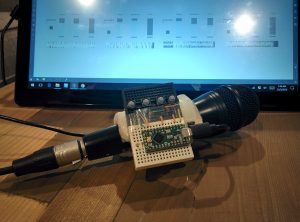Dominic Barrett
A controller that wraps around a microphone and turns recorded sounds into synthesizer voices.
http://www.dominicbarrett.com/itpblog/?page_id=2
Description
The Mic Cuff Controller is a physical device that wraps around a standard microphone and plugs into your computer via USB. Buttons on the Mic Cuff control the behavior of a granular sampling synthesizer program written in Max MSP. These buttons allow the user to play the synthesizer and also record new audio to load into the synthesizer as well, without having to let go of the microphone during performance. Users will be encouraged to experiment with their voices and some provided sound making toys in order to create new and interesting sounds. The Max MSP patch will have a minimal, straightforward UI that allows for quick understanding of the program functionality. This will also limit configurations of the synthesizer to optimal ranges for more desirable output.
Materials:
The Mic Cuff Controller, computer with screen, audio interface, microphone with cable, headphones, miscellaneous noise makers, and some signs to indicate usage and prompt playful ideas.
Needs:
The above materials, with a modest amount of desk sized space to accommodate for them. A standard amount for screen (mouse and keyboard if necessary), with an additional amount of space for little noise making objects that users can play with.
Challenges:
1) The video provided features a prototype that only has four buttons instead of five. In this case, the four buttons playback audio, and the recording is done via indication on a touch screen. This button will need to be added. Upon completion, the fifth button will replace the on-screen button.
2) Currently the physical construction of the cuff is in it's prototyping phase. Fabrication will need to be completed for it to stand up to the rigors of public testing.
I am confident that I can address these two items before the Winter Show.
Classes
Introduction to Physical Computing ITPG-GT.2301.005


